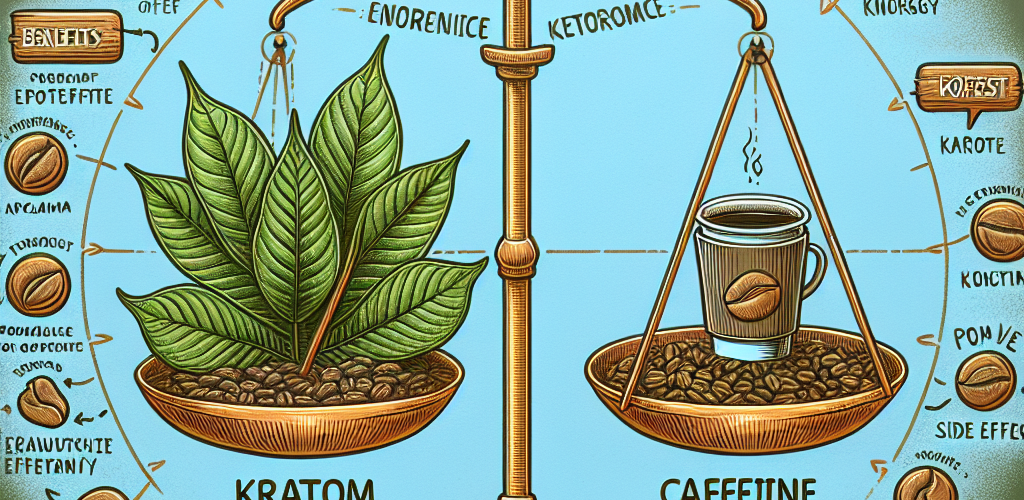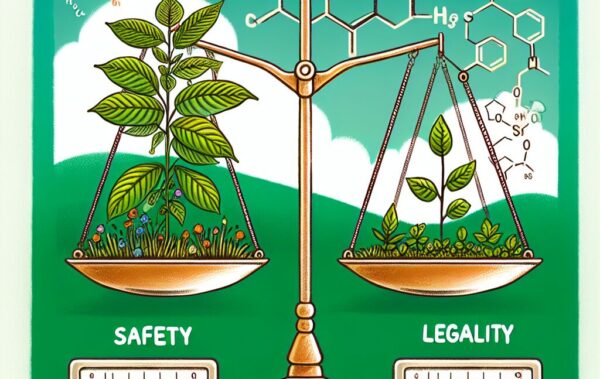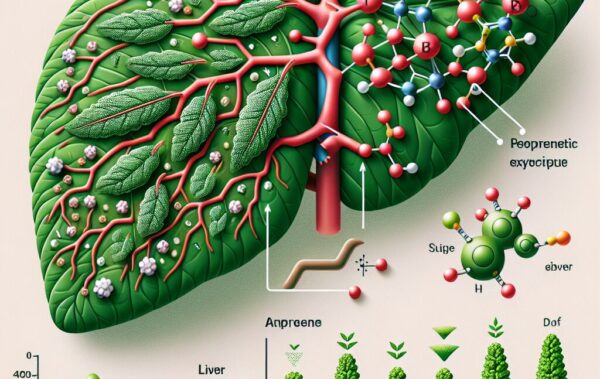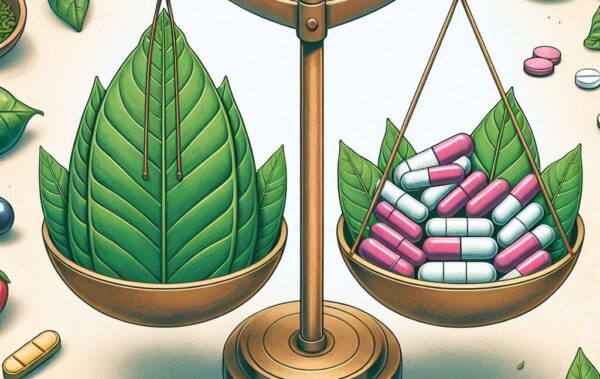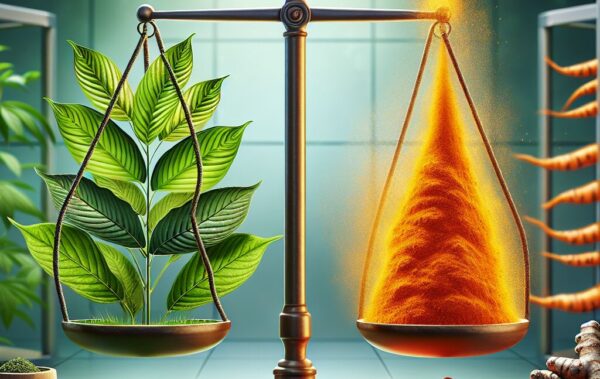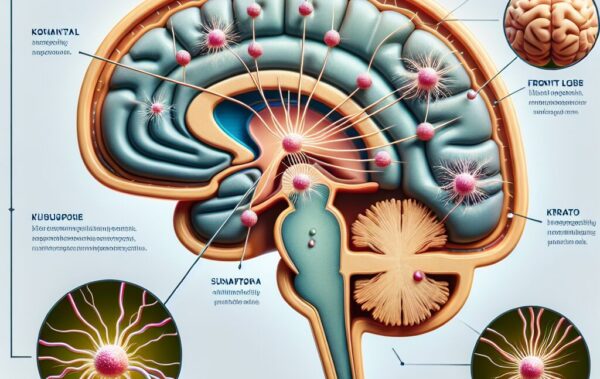- What is Kratom and How Does It Work?
- The Effects of Kratom on Energy Levels
- Caffeine: The Traditional Stimulant
- Comparing Kratom and Caffeine for Energy Enhancement
- FAQs on Kratom and Caffeine as Energy Boosters
Kratom, a tropical evergreen tree from Southeast Asia, has caught the attention of many looking for natural stimulants and caffeine alternatives. Particularly known for its energy-boosting properties, this member of the coffee family has been traditionally used for centuries in its native regions. Its leaves contain compounds called alkaloids, with mitragynine and 7-hydroxymitragynine being the most significant. These alkaloids interact with the body’s opioid receptors but, unlike prescription opioids, they do not create a comparable level of dependence or the risk of fatal overdose.
When consumed in small doses, kratom acts as a stimulant, providing users with increased energy, alertness, and sometimes elevated mood, which is why it’s often sought after as “Kratom for energy.” Kratom can be ingested in various forms, such as kratom powder, capsules, tea bags, and even edibles. Each method may affect the onset and duration of its effects. Its versatility and potency have heightened its popularity as a natural remedy for those seeking energy boosts throughout the day without the jitteriness sometimes associated with coffee or energy drinks.
However, kratom is not without its controversies. Opinions on its use vary widely, and legality is a complex issue, varying from country to country and within different states in the U.S. Its effects vary greatly depending on the dose and strain. There are different types of kratom strains, each with its own unique properties. For instance, White Vein strains are often chosen for their potential to provide energy and focus, while Red Vein strains are typically sought for relaxation and pain relief. Understanding how kratom works, its potential benefits, and possible risks is essential for those considering it as an alternative to traditional stimulants like caffeine.
The Effects of Kratom on Energy Levels
Kratom has been gaining traction as a promising natural stimulant, rising to prominence among individuals keen on exploring caffeine alternatives for boosting their energy levels. This botanical substance, when consumed at lower dosages, mirrors the effects of a mild stimulant, which can lead to increased motivation, vigor, and mental clarity. As people strive to maintain their busy lifestyles, many have begun to turn to kratom for energy, utilizing its distinctive properties to help them tackle their day with renewed zeal.
What sets kratom apart is its mechanism of action. The phytochemicals present in kratom leaves, primarily mitragynine, interact with certain brain receptors, which may affect energy levels and mood. This interplay has the potential to result in a natural uplift in stamina and concentration. Some users report feeling more engaged and capable of handling strenuous tasks after consuming kratom. These stimulating effects can make it an appealing option for those seeking an enhancement in their daily performance without the harsh side effects often experienced with synthesized stimulants.
For individuals in search of a controlled boost in their energy, kratom can be explored in various formats. There is an extensive range of kratom products available, including easy-to-use kratom capsules for convenience and precision dosing, as well as versatile kratom powders that can be incorporated into smoothies or teas. The rise in popularity has also seen the emergence of delicious edibles and refreshing kratom beverages, which offer a delectable way to consume kratom and reap its energizing benefits.
It’s essential to note that the energy-boosting properties of kratom are influenced by the strain and dosage. White Vein kratom strains, for example, are widely recognized for their potential to enhance alertness and stamina, which can be particularly advantageous for morning use or combating midday slumps. In contrast, other strains, such as the Red Vein varieties, may provide a more calming and sedative effect. This delineation among the strains underscores the importance of selecting the appropriate type of kratom to suit one’s specific needs for energy enhancement.
While kratom has been celebrated as one of the energy herbs embraced by the wellness community, it is not without its share of scrutiny. The legal status and regulation of kratom continue to be the subject of debate, underscoring the need for consumers to educate themselves on the laws and guidelines surrounding its use in their respective regions. Additionally, the potency and effects of kratom can vary greatly, making it essential for users to approach its consumption with caution and to consider all information and guidance available on responsible usage.
In conclusion, the effects of kratom on energy levels are distinctly promising for those in pursuit of natural stimulants. It stands as a captivating alternative to traditional caffeine sources, offering a spectrum of strains and consumption methods tailored to individual preferences and energy needs. Whether one chooses to incorporate kratom into their regimen for an occasional energy boost or as a daily supplement, it is a topic that continues to intrigue the natural health community and calls for further exploration and understanding.
Caffeine: The Traditional Stimulant
Caffeine has been a cornerstone of stimulation for centuries, deeply ingrained in the cultural fabrics of societies around the world. Known scientifically as a central nervous system stimulant, caffeine is revered for its ability to ward off drowsiness and restore alertness. It’s found naturally in over 60 plant species, with the most commonly consumed sources being coffee beans, tea leaves, kola nuts, and cacao pods.
When consumed, caffeine is quickly absorbed into the bloodstream and begins to stimulate the brain. Its primary mechanism of action involves blocking the adenosine receptors in the brain. Adenosine is a neurotransmitter that promotes sleep and relaxation; by inhibiting its receptors, caffeine effectively postpones fatigue and enhances concentration and focus. This “postponement of tiredness” effect is why millions start their day with a hot cup of coffee or reach for an energy drink or cola for an afternoon pick-me-up.
While caffeine is celebrated as a traditional and reliable stimulant, it’s not without its drawbacks. Many individuals experience a “crash” or feelings of irritability and anxiety at higher doses, not to mention the potential for disrupted sleep patterns. These side effects are leading health-conscious consumers to seek caffeine alternatives, such as kratom for energy, to invigorate their bodies and minds without such negative consequences.
Despite its widespread acceptance, it is still recommended to consume caffeine in moderation. Overconsumption could lead to dependency, as the body may require higher doses of caffeine to achieve the same levels of wakefulness over time. This can turn into a cycle where the body demands more caffeine to counteract the increased adenosine receptors due to regular caffeine intake.
For those seeking options beyond the realm of traditional coffee and tea, various products on the market provide caffeine with a twist. One can find caffeine infused in everything from chewing gum to shower gels, and there’s a growing niche for natural stimulants like kratom, which are carving out their own space in the pantheon of energy-boosting substances. Kratom’s appeal lies in its array of use from powders designed for teas to capsules for convenient dosing.
The consumer’s pivot towards embracing kratom also spotlights a broader trend in society, where there’s a noticeable shift towards individually tailored health and wellness solutions. People are not only keen to find caffeine alternatives, but they are also more invested than ever in discovering what they term ‘energy herbs’ and supplements that closely align with their personal health ethics and sustainability values.
In essence, caffeine, the traditional stimulant, is a time-honored, potent force in the battle against lethargy and can be a useful tool when used appropriately. However, the quest for energy enhancement doesn’t stop with this familiar compound. As we see the rise of multifaceted and dynamic lifestyles, there’s a corresponding surge in demand for diverse, natural stimulants that offer a spectrum of effects and experiences, like kratom for energy, which cater to the nuanced needs of modern-day individuals.
Comparing Kratom and Caffeine for Energy Enhancement
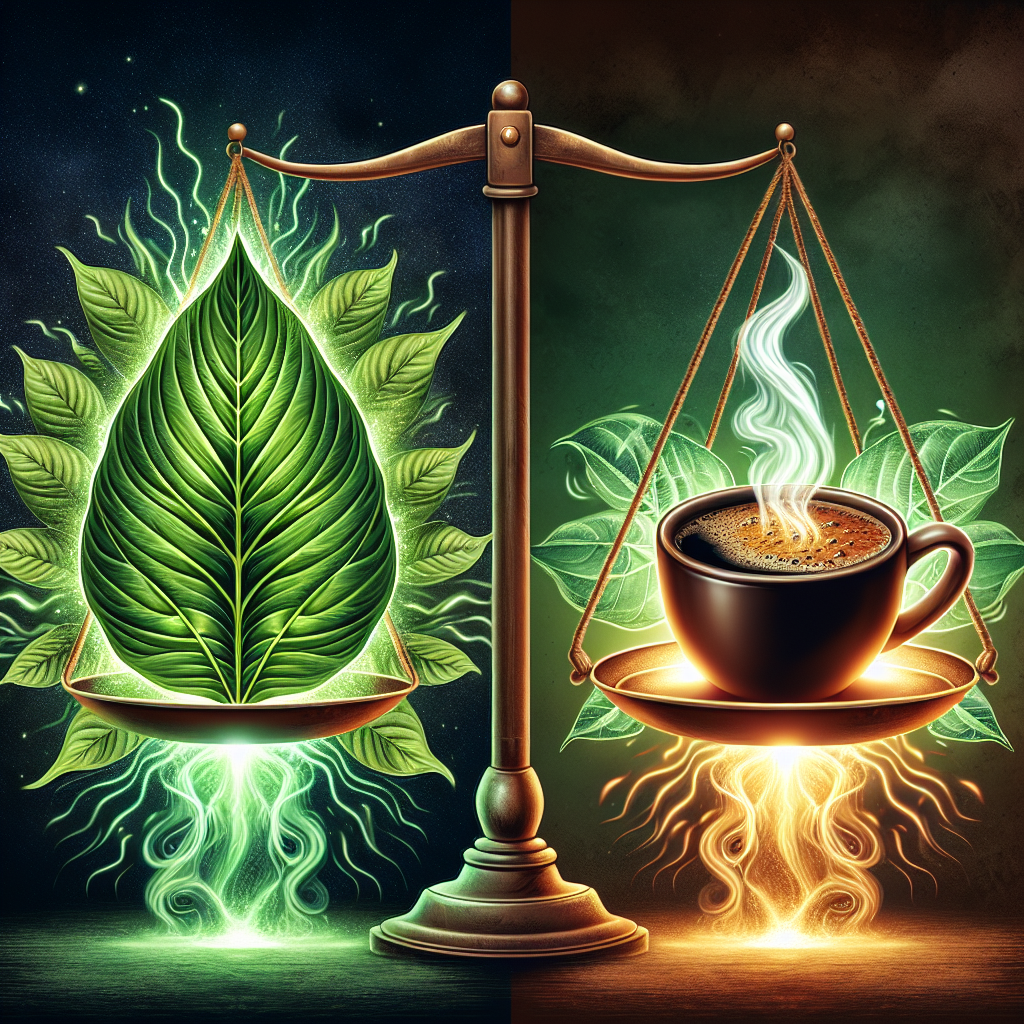 When considering Kratom and caffeine together, it’s clear that both have become staples for those seeking to elevate their energy levels. Each offers unique advantages and potential drawbacks, making the choice between them dependent on personal preferences and specific circumstances.
When considering Kratom and caffeine together, it’s clear that both have become staples for those seeking to elevate their energy levels. Each offers unique advantages and potential drawbacks, making the choice between them dependent on personal preferences and specific circumstances.
Kratom, often endorsed as a natural stimulant, provides a more nuanced approach to energy enhancement than the binary kick of caffeine. For those who are sensitive to the more intense rush and subsequent jitters that can accompany caffeine consumption, Kratom for energy can be a gentler alternative. The impact of smaller doses of Kratom tends to be more subtle and controlled, offering a graduated increase in alertness that many find does not lead to the abrupt ‘crash’ typical of caffeine.
However, comparing these two goes beyond just the immediate sensation. There’s the additional aspect of personalization with Kratom. Since different strains have varying effects, individuals can select a product like Maeng Da or a White Vein Kratom to tailor their experience. Those interested can browse strains such as Maeng Da Kratom powder or White Vein Kratom powder for an energizing boost or explore other options that might focus more on enhancing mood or ease of relaxation.
On the other hand, caffeine – as a traditional stimulant and one of the world’s most widely used substances – offers predictability. Its well-documented effects range from increased mental acuity to improved physical performance. Products like Kratom seltzers or Kratom liquid extracts can serve as caffeine alternatives for those searching for an equivalent pep with potentially smoother impacts on the body.
Furthermore, the comparison raises questions about duration and intensity of effect. Caffeine typically manifests rapidly after consumption, with a peak effect lasting a few hours. Kratom’s onset may be slower but can offer a sustained sensation over a longer period. This sustained release can be beneficial for those looking to avoid the midday slump without resorting to multiple cups of coffee.
Another critical factor in the discussion is accessibility and regulation. Caffeine is present in countless products worldwide and is easier to dose due to its established presence in the food and drink industry. Although Kratom is legal in many places, it still faces regulatory hurdles and skepticism. Consumers need to be mindful of the legal status and purity of the products they choose.
By weighing these factors, individuals can better understand the role that Kratom or caffeine might play in their energy enhancement strategies. Whether one opts for the stimulating effects of caffeine found in traditional beverages or the varied and weightier impact of Kratom products, personal experience and mindful consumption should guide the decision.
Ultimately, both Kratom and caffeine hold merits for their energizing properties, but their differences highlight the importance of individual choice regarding health and lifestyle. In a culture saturated with options for boosting vitality, it’s reassuring to have a range of choices to suit the varied and dynamic needs of modern life. Whether it is through ‘Kratom for energy,’ exploring caffeine alternatives, or a combination of natural stimulants, there is a path for everyone in the pursuit of heightened alertness and vigor.
FAQs on Kratom and Caffeine as Energy Boosters
Navigating the myriad of options for energy enhancement can lead to a host of questions, especially when it comes to choosing between kratom and traditional caffeine sources. Here, we address some of the most frequently asked questions (FAQs) to help dispel uncertainties and provide clarity on using kratom for energy versus the more established caffeine alternatives.
FAQs on Kratom and Caffeine as Energy Boosters:
-
Q: Can kratom really be used as an alternative to caffeine for energy?
A: Yes, many users report that kratom, in small doses, acts as a natural stimulant and works to increase their energy levels without some of the edginess or jitters that caffeine can cause. While the effects may vary based on the strain and dosage, kratom is gaining popularity among those looking for natural stimulants and caffeine alternatives. -
Q: What are the best strains of kratom for boosting energy?
A: Generally, the White and Green Vein strains of kratom are favored for their energizing and focus-enhancing properties. For example, strains like White Vein Maeng Da or Green Malay are often recommended for those seeking a significant energy boost. Explore various options such as White Vein kratom powder to find the one that best suits your needs. -
Q: How does the energy boost from kratom compare to that from caffeine?
A: While caffeine acts quickly to stimulate the central nervous system, the energy boost from kratom tends to come on more gradually and can last longer. Unlike caffeine, which blocks adenosine receptors, kratom interacts with opioid receptors in the brain, offering a different kind of energy boost that many find to be smoother and less prone to causing a “crash” afterwards. -
Q: Are there any legal concerns surrounding the purchase and use of kratom?
A: The legality of kratom varies by location, with some countries and states having specific regulations concerning its sale and use. It is vital to educate yourself on the laws in your area before purchasing kratom products like those you might find in a kratom shop. -
Q: What are possible side effects of using kratom for energy?
A: Similar to other stimulants, kratom can cause side effects especially if consumed in large doses. Possible side effects include nausea, dizziness, dehydration, and dependence with long-term use. It’s essential to start with a low dose and monitor your response to it. -
Q: Can kratom and caffeine be used together?
A: Some people may use both kratom and caffeine together for a combined effect. However, it’s important to be cautious when mixing stimulants as this can increase the likelihood of side effects. Always start with lower doses of both and see how your body responds before considering combining them. -
Q: How do I find high-quality kratom?
A: To ensure you’re getting a high-quality product, it’s best to purchase from reputable vendors who offer third-party lab testing results for their kratom. Transparency about the source and purity of their products is a good sign of a trustworthy vendor. A variety of kratom products can be found at kratom.markets, which might be a starting point for those new to kratom. -
Q: Is kratom suitable for everyone?
A: Kratom is not suitable for everyone, especially those with preexisting health conditions, those who are pregnant, or those who are already taking other medications. It’s always a good idea to consult with a healthcare provider before introducing a new supplement into your regimen.
By understanding kratom’s role as an option among energy herbs, and acknowledging its unique qualities as a natural stimulant, you can make a more informed decision about whether it might serve as a suitable caffeine alternative for your lifestyle. Keep in mind that personal experiences vary, and responsible consumption is key to enjoying the benefits of both kratom and caffeine for energy.

